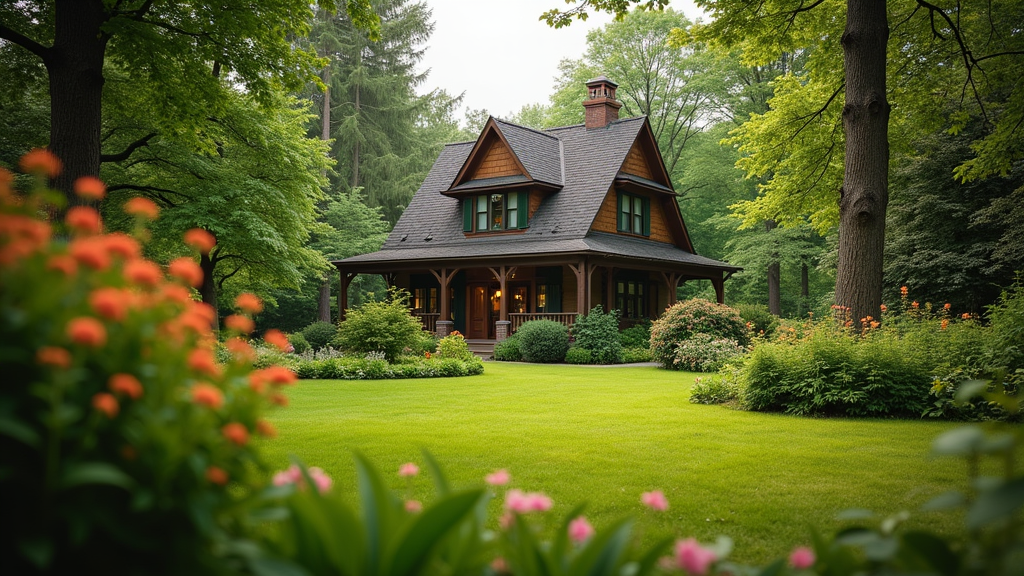Introduction
When it comes to maintaining a beautiful lawn, one of the most frustrating challenges homeowners face is lawn diseases. A lush green yard can quickly turn into a patchy nightmare if you're not vigilant about identifying and treating these common ailments. Understanding how to identify and treat common lawn diseases is crucial for any lawn care enthusiast who wants to keep their outdoor space looking its best.
In this comprehensive guide, we'll delve into the various types of lawn diseases, their symptoms, causes, and—most importantly—how to treat them effectively. Whether you’re a seasoned gardener or just starting out, understanding these concepts will help you develop a robust lawn care strategy. So grab your gardening gloves as we dig deep into the world of lawn diseases!
Understanding Lawn Diseases
What are Lawn Diseases?
Lawn diseases are conditions that affect the health of your grass, often leading to discoloration, wilting, or even death of the turf. They’re usually caused by various factors including:
- Fungi Bacteria Viruses Environmental stressors
The most common symptoms include brown patches, spots, or an overall decline in turf quality.
Why is Lawn Disease Common?
You might be wondering, “Why do some lawns suffer more than others?” The truth is that certain conditions favor the development of lawn diseases. Overwatering, poor soil quality, inadequate sunlight, and incorrect mowing practices often create an environment ripe for disease.
Types of Lawn Diseases
There are several types of lawn diseases that can affect your grass. Below are some of the most prevalent ones:
Brown Patch Dollar Spot Pythium Blight Rust Powdery MildewEach type has its own unique characteristics and treatment methods.
How to Identify Common Lawn Diseases
Recognizing Symptoms
No one likes dealing with sick grass! But recognizing symptoms early on can save you a lot of headache later. Here’s how to identify some common lawn diseases:
1. Brown Patch
Symptoms:
- Circular brown patches that may appear wet Grass may feel spongy underfoot
Causes: Often caused by high humidity and excess nitrogen fertilizer.
2. Dollar Spot
Symptoms:
- Small circular patches (about the size of a silver dollar) Light tan color with darker edges
Causes: Typically occurs in hot weather with high humidity levels.
3. Pythium Blight
Symptoms:
- Water-soaked spots that turn grayish-brown Grass appears slimy when touched
Causes: Often thrives in wet conditions; overwatering is a significant factor.

4. Rust
Symptoms:
- Orange or yellowish spores on grass blades Grass may become thin and weak
Causes: Cool temperatures with high humidity can contribute.
5. Powdery Mildew
Symptoms:
- White powdery substance on leaves Leaves may curl or distort
Causes: Poor air circulation coupled with high humidity levels leads to this problem.
Treatment Options for Lawn Diseases
General Treatment Guidelines
Before jumping into specific treatments for each disease, here’s a quick overview:
Cultural Practices: Adjust watering schedules and mowing heights. Fungicides: Use chemical treatments as needed. Soil Health: Regularly test soil pH and nutrient levels. Aeration: Aerate your lawn periodically to improve drainage.Specific Treatments for Common Diseases
Let’s break down treatment options based on specific diseases:
1. Brown Patch Treatment
To combat brown patch:
- Reduce nitrogen fertilization. Avoid watering in the evening; water in early morning instead. Consider applying fungicides labeled for brown patch control.
2. Dollar Spot Treatment
For dollar spot:
- Increase mowing height. Apply fungicides when symptoms first appear.
3. Pythium Blight Treatment
Combat Pythium blight by:
- Improving drainage in affected areas. Reducing watering frequency.
4. Rust Treatment
Treat rust by:
- Increasing air circulation through proper mowing techniques.
5. Powdery Mildew Treatment
To tackle powdery mildew:
- Thin out dense plantings for better airflow.
Preventing Lawn Diseases
Best Practices for Healthy Lawns
Prevention is always better than cure! Here are some best practices you can implement:
Regular Mowing: Keep your grass at an optimal height (around 2 to 3 inches). Water Wisely: Water deeply but infrequently—this encourages deep root growth. Fertilize Appropriately: Use slow-release fertilizers based on soil tests. Aerate Your Lawn: This improves air circulation and promotes healthy roots.Seasonal Considerations
Different seasons call for different care strategies:
Spring: Focus on fertilization and weed control. Summer: Monitor moisture levels closely; avoid over-watering. Fall: Aerate before winter sets in; overseed if necessary.FAQs About Lawn Diseases
FAQ #1: What are the first signs of lawn disease?
The first signs usually include discoloration of grass blades along with irregular patches in your yard.
FAQ #2: Can I prevent all lawn diseases?
While not all diseases can be prevented entirely, following good cultural practices significantly reduces risk.
FAQ #3: Is it safe to use fungicides?
Yes, when used according to label directions; always wear protective gear while applying chemicals.
FAQ #4: What’s the best time to apply fungicides?
The best time is when you first notice symptoms or during periods when conditions favor disease development (e.g., humid weather).
FAQ #5: How often should I aerate my lawn?
Generally recommended once a year; however, lawns under heavy traffic may benefit from more frequent aeration.
FAQ #6: Can I treat multiple diseases at once?
It’s usually best practice to focus treatment on one disease at a time for maximum effectiveness unless they share treatment methods or products.
Conclusion
Taking care of your lawn doesn’t have to be an uphill battle against common diseases! By learning how to identify and treat common lawn diseases effectively, you’ll not only maintain a vibrant yard but also enjoy spending time outdoors—whether it's hosting gatherings or simply relaxing with family.
Remember that regular monitoring combined with preventive measures creates the perfect recipe for success in maintaining a healthy landscape! So roll up those sleeves and get ready https://zenwriting.net/aearnewire/h1-b-planning-an-outdoor-kitchen-essential-landscaping-considerations-for to cultivate not just grass but also pride in your outdoor oasis!